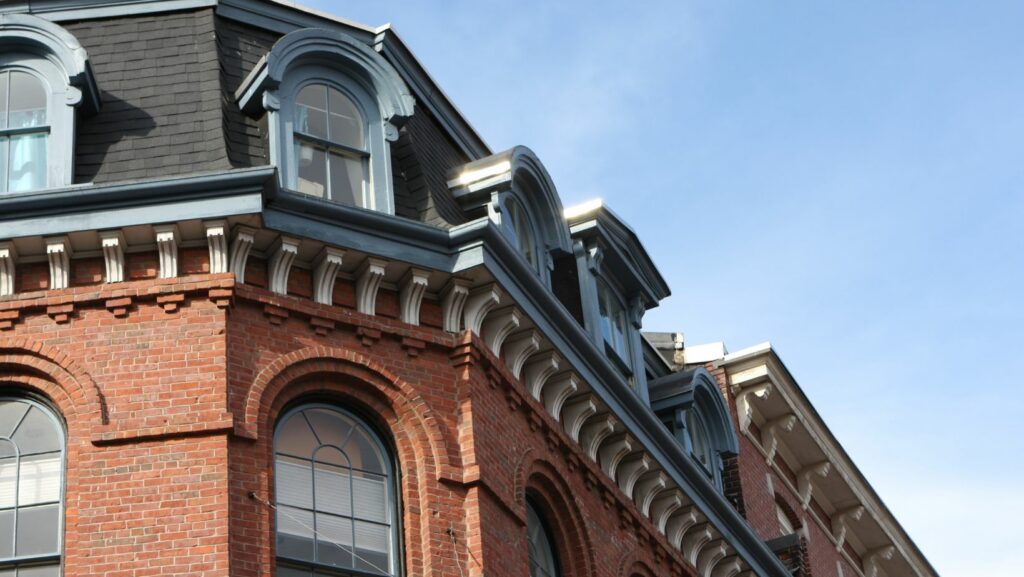From the dramatic arches of Gothic cathedrals to the clean lines of modernist designs, European architectural styles have shaped the world’s landscapes for centuries. They’re more than just bricks and mortar – they’re a testament to human creativity, innovation, and resilience.
Each style tells a unique story, reflecting the political, cultural, and technological shifts of its time. Whether you’re an architecture enthusiast or simply curious, understanding these styles can offer a fascinating glimpse into Europe’s rich and diverse history. Let’s embark on a journey through time, exploring the captivating world of European architectural styles.
European Architectural Styles
 European architectural styles offer a diverse range of aesthetics, each carrying its history and influence. Delve into these distinct periods and learn about their unique characteristics and most notable structures. Starting with the ancient classical styles, appreciate the grandeur that Romans brought to architecture, emphasized by renowned structures like the Colosseum. Transition to the middle ages, uncover the intricate details of Gothic architecture marked by pointed arches, ribbed vaults, and flying buttresses, famously witnessed in France’s Notre Dame Cathedral.
European architectural styles offer a diverse range of aesthetics, each carrying its history and influence. Delve into these distinct periods and learn about their unique characteristics and most notable structures. Starting with the ancient classical styles, appreciate the grandeur that Romans brought to architecture, emphasized by renowned structures like the Colosseum. Transition to the middle ages, uncover the intricate details of Gothic architecture marked by pointed arches, ribbed vaults, and flying buttresses, famously witnessed in France’s Notre Dame Cathedral.
Jump ahead to the Renaissance, an era that sought to revive classical architecture, giving birth to breathtaking structures like Rome’s St. Peter’s Basilica. But, beyond this, modernism emerged in the 20th Century, introducing minimalist designs and functional aesthetics represented by Bauhaus designs in Germany. Each style forms an integral part of Europe’s architectural narrative, and they demonstrate the continent’s evolving preservation of cultural heritage through structural designs.
Key Features of Gothic Architecture
 Gothic architecture, born in Europe’s Middle Ages, exudes a unique blend of grandeur and intricacy. It’s distinguished by its key features: pointed arches, ribbed vaults, and flying buttresses.
Gothic architecture, born in Europe’s Middle Ages, exudes a unique blend of grandeur and intricacy. It’s distinguished by its key features: pointed arches, ribbed vaults, and flying buttresses.
Pointed arches, thematically Gothic, replace the rounded ones found in Romanesque structures, offering aesthetic and engineering advantage. Their shape directs the weight’s force downwards, allowing for larger windows and doors, often adorned with stunning stained glass. Gothic structures, like the Reims Cathedral, exemplify this feature.
Lastly, flying buttresses, although an engineering solution for later Gothic structures, have become synonymous with the style. Offsetting wall-thrusts externally, they enabled walls to be largely glass-filled and lofty, as seen in Notre-Dame de Paris.
Renaissance Revival in Architecture
Advancing from Gothic, the Renaissance period revives the architectural elegance rooted in classical ideals of balance and harmony. These aspects manifest notably in buildings such as Palazzo Medici Riccardi and Palazzo Rucellai, displaying clear, symmetrical plans with columns, pilasters, and semi-circular arches reflected in their design. This style, predominantly seen in Italy, strived for simplicity and rational order.
 Harbouring the essence of the Greek and Roman cultures, this style often incorporates symmetrical compositions, horizontal planes, and domed roofs alluding to the Pantheon. For instance, Florence Cathedral, with its distinguishing elements, Titian’s Assumption, and Andrea Palladio’s buildings, flourish under the Renaissance architectural style.
Harbouring the essence of the Greek and Roman cultures, this style often incorporates symmetrical compositions, horizontal planes, and domed roofs alluding to the Pantheon. For instance, Florence Cathedral, with its distinguishing elements, Titian’s Assumption, and Andrea Palladio’s buildings, flourish under the Renaissance architectural style.
Driven by architects such as Filippo Brunelleschi, Leonardo da Vinci, and Michelangelo, Renaissance architecture served as a tangible extension of the resurgence in humanistic thought. It remains a quintessential representation of Europe’s affinity for artisanal elegance, scientific exploration, and architectural innovation.
The Bauhaus Movement and Modernism
As we’ve traversed the timeline of European architecture, it’s evident that each style reflects the era’s societal values and technological advancements. The Bauhaus movement and modernism, which we’ve yet to touch on, are no exceptions. Born in the 20th century, these styles symbolize Europe’s break from tradition and embrace of the new. They championed function over form, clean lines, and minimal ornamentation, a stark contrast to the preceding centuries’ intricate designs. Buildings like the Bauhaus School and Villa Savoye epitomize this shift. They’re a testament to Europe’s architectural evolution, highlighting how the continent has continually reinvented its built environment. So, whether it’s the grandeur of Rome, the symmetry of the Renaissance, or the simplicity of modernism, Europe’s architectural styles are as diverse as its history, each telling a unique story of the continent’s past and present.

